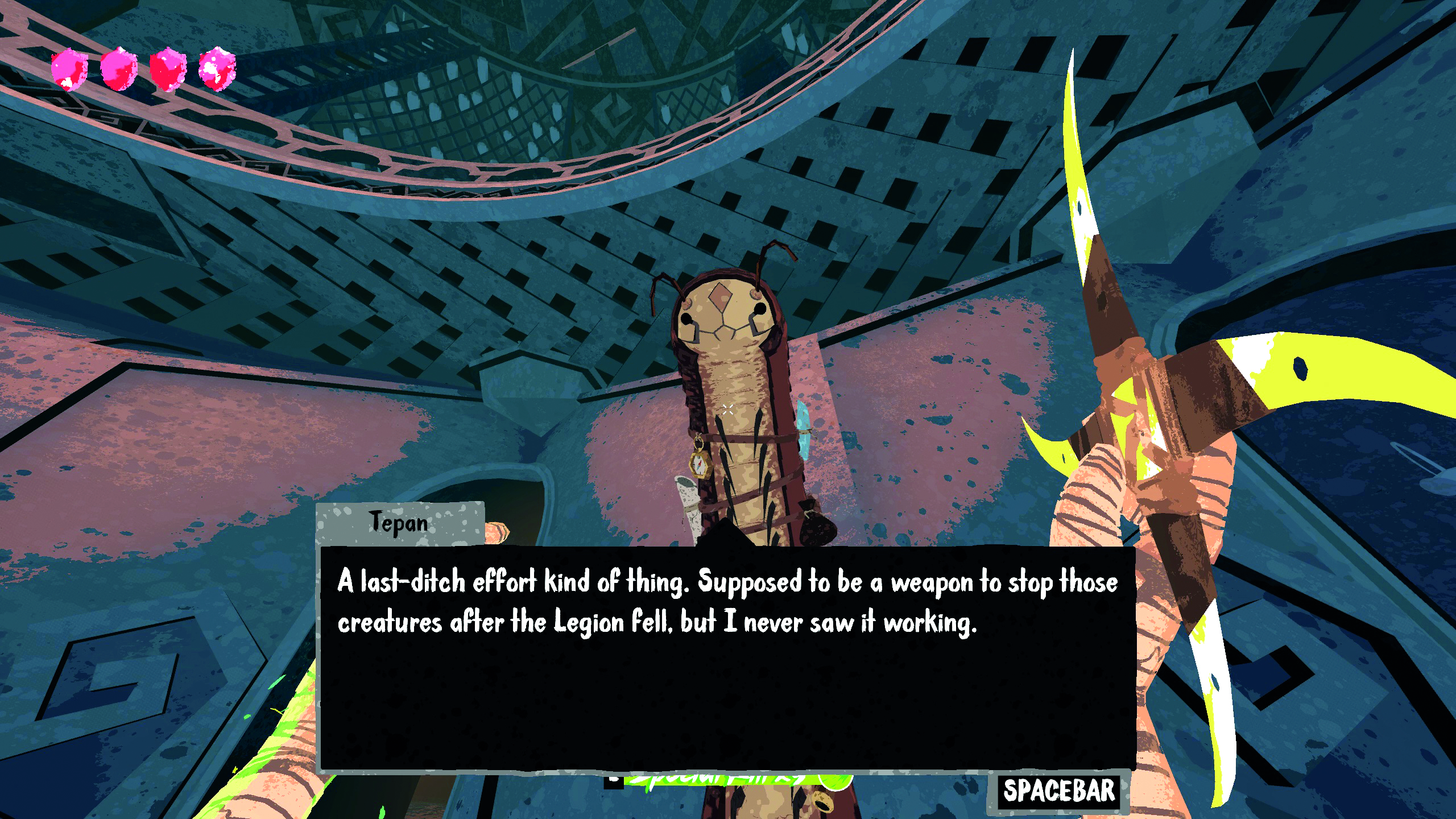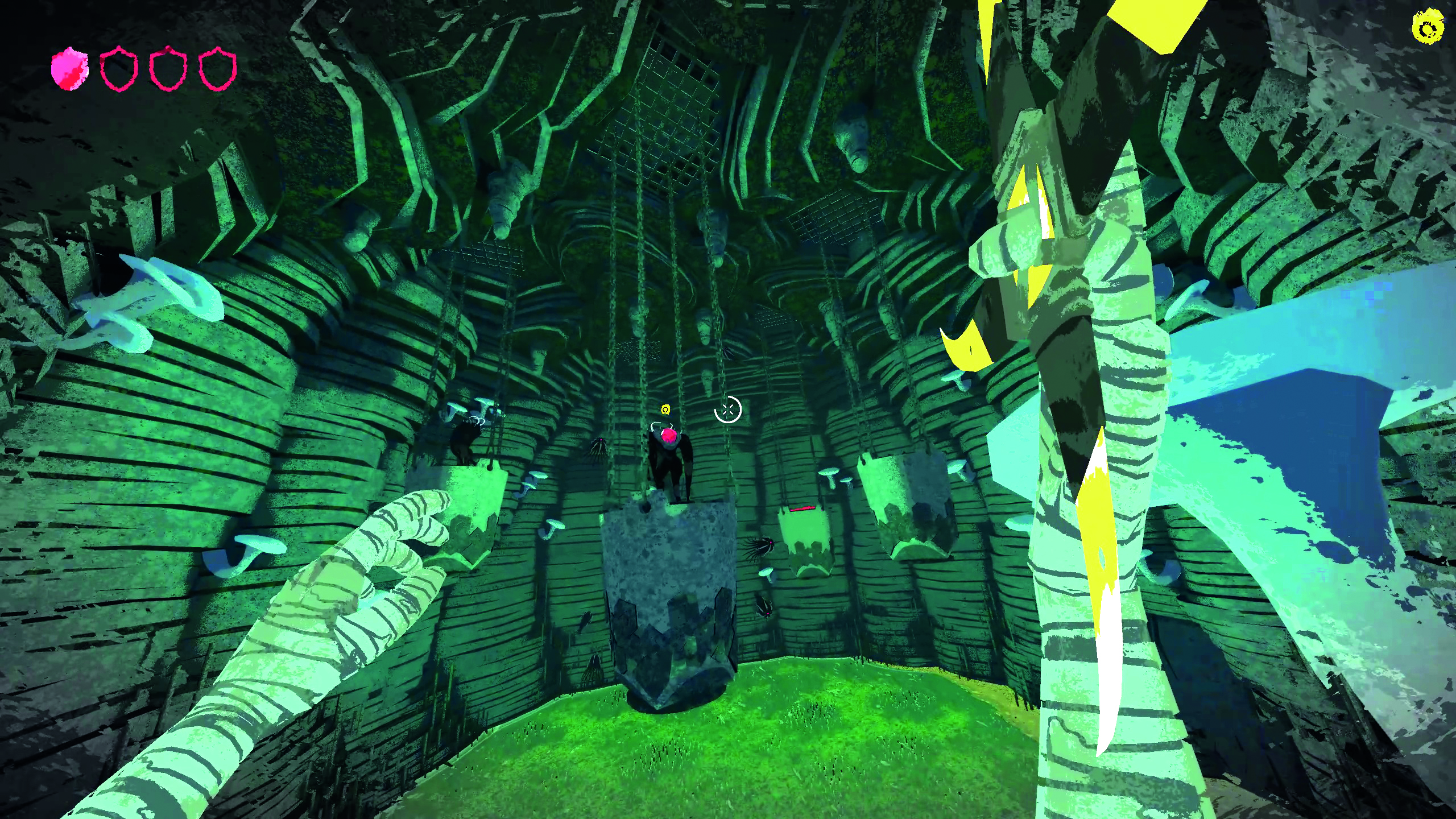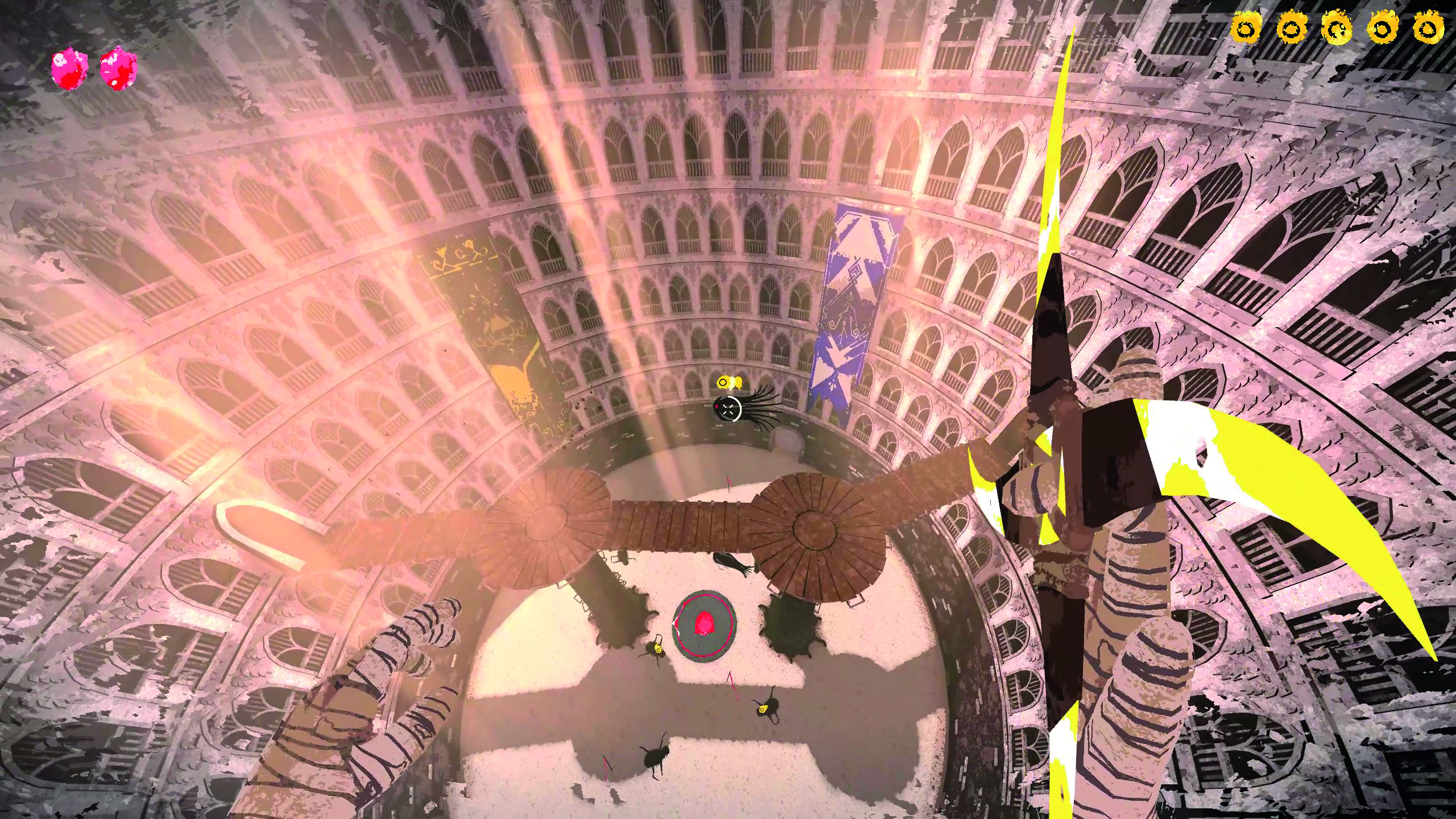Boomerang X brings gamepad control closer to mouse-aim more than ever

This article first appeared in PC Gamer magazine issue 361 in September 2021. Every month we run exclusive features exploring the world of PC gaming—from behind-the-scenes previews, to incredible community stories, to fascinating interviews, and more.
Boomerang X is an arena shooter that shouldn’t work on a gamepad. You’re able to toss a mystical bladed boomerang like its an extension of your body, dragging its wide arc through multiple enemies, recalling it whenever you like, and even magnetising yourself to its current location. This is a game where you can’t stop moving, where success is found dancing through the air, whipping the camera around to poke at half a dozen goo monsters from across the map in a single leap. Mouse-aim is almost required.
Even with decades of experience with my trusty mouse and keyboard, I found it pretty demanding. So in an effort to bring Boomerang X to as many people as possible, the team at Dang! turned to an emerging, experimental gamepad control scheme as a means of keeping the action as pure as possible, no aim-assist or odd stick acceleration taking the wind out of things. Boomerang X is the first commercial game to use Flick Stick, a gyro-based scheme that makes the dual analogue method feel old-fashioned.
Flick Stick pushes gyro controls beyond their more common implementation. Maybe you’ve played Splatoon on the Nintendo Switch, where one control scheme maps vertical aim to the tilt of the controller, while horizontal aim and movement work as usual on the sticks. Rather than use the right stick to push the camera left or right based on directional input, Flick Stick smoothly snaps the camera to an angle relative to their current orientation.
X factor
For example, if you’re facing forward and there’s an enemy behind you, if you press directly back on the stick, the camera will do a quick 180, almost like controlling a top-down arcade shooter. Vertical aim is then mapped to the gyro, which allows the player to account for X and Y aim independently and far more intuitively than nudging a direction on the stick, squeezing two variables into one mushy input, banking on camera acceleration guesswork and aim-assist to carry your intention through.

Sam Suite, one of the co-leads on Boomerang X, has a clever way of describing Flick Stick, “Rather than using the right joystick to look around, you’re looking around in the immediate vicinity, as if your neck was in your hands.”
The creator of Flick Stick is a developer that goes by JibbSmart, who’s written the gyro control bible on their website and shares the code used to build the scheme openly there. They demonstrate the ethos, implementation, and accuracy of Flick Stick in detail, working through CS:GO matches with relative ease, whipping the aiming reticle around with the same reflex and accuracy games designed with mouse-aim first demand. It’s a proof of concept on its own, but Boomerang X’s great implementation could call even more attention to the benefits of Flick Stick.
Flick Stick effectively evens the playing field for gamepad and mouse-aim control methods
In fast-paced shooters like Boomerang X, where enemies are constantly encroaching or sending out shadowy waves of dark energy from every direction, Flick Stick effectively evens the playing field for gamepad and mouse-aim control methods. For developers, the widespread adoption of Flick Stick means far less design contortionism – it gives them the leeway to make games under the assumption that everyone will be playing with the means to move and aim quickly and accurately.
But that all assumes a perfect world. Flick Stick requires a gyro sensor to work, and Xbox controllers are the only gamepad from the major console manufacturers without one built in. There’s also a huge cultural barrier: the FPS gamepad control method has been dual analogue for decades now, which won’t come undone overnight, or ever, potentially. Shooters have been designed around the shortcomings of dual analogue control for just as long, and leaving dual analogue behind for good would likely require a huge shift away from the comfort zone of big reticles and generous auto-aim.

Getting big studios to change won’t be easy, requiring more of a grassroots upswell first. “There’s a lot of inertia to just go with the regular control scheme. We can just do whatever we want, so we went and did it,” says Sam. “But if you’re talking about Rockstar, that’s gonna be a hard sell.”
Despite decades of old habits crowding the hallway, Flick Stick has potential to become a standard control method alongside mouse and analogue aim, and likely beginning with indie developers. For one, it’s extremely easy to implement. It’s also pretty much perfect on arrival. Dang! didn’t implement Flick Stick into Boomerang X until very late into its development, when they were putting together the Nintendo Switch version of the game, and it only required a few tweaks to get working.
Most importantly, Flick Stick is very easy, if a little awkward, to learn. The biggest sticking point comes from learning to ‘pause’ the gyro. Since you don’t want players literally spinning the controller in circles, Flick Stick’s scheme dedicates a button to stopping the gyro so players can move the controller back to a default, comfortable position before making another series of movements. Suite tells me to think of it like lifting a mouse to reset it at the centre of your pad. It’s weird, but I forgot I was doing it before long.

Ben Caulkins, another Boomerang X co-lead, isn’t so certain about Flick Stick’s future, but sees it as a viable standard accessibility option. “When we include a colour-blindness mode, that’s not something I’m going to be able to appreciate. But there are a lot of people out there who are going to be able to appreciate it, and I look at Flick Stick in the same way.”
Suite’s a little sweeter on Flick Stick, but don’t expect a major gamepad control revolution tomorrow. “It’s like a Dvorak keyboard,” he says. “I hope everybody suddenly buys a Dvorak keyboard. But yeah, I don’t know if that’s gonna happen.”

Post a Comment